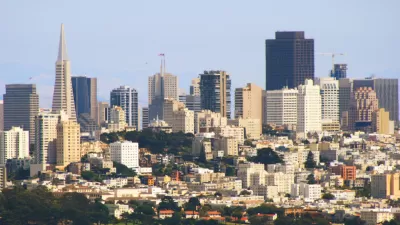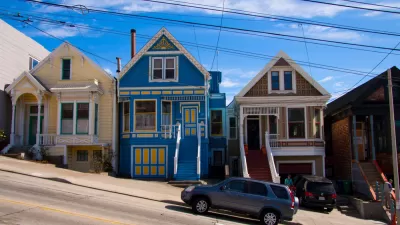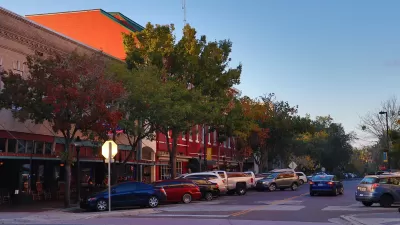A proposal before the Board of Supervisors could undermine the state's density law by upzoning the city to allow duplexes, a step housing advocates call a disingenuous effort to prevent higher density.

San Francisco officials are proposing a novel workaround for SB9, a new California law that promotes increased density in neighborhoods previously zoned only for single-family homes, report Dustin Gardiner and J.D. Morris for the San Francisco Chronicle.
On its surface, "Supervisor Rafael Mandelman’s plan would double down on the state’s goal to add more homes in existing neighborhoods by allowing up to four units on lots currently zoned for residential homes — and up to six units on corner lots." However, "the effort recently took on a new dimension after he accepted a recommendation from the Planning Commission that would upzone all single-family neighborhoods to allow duplexes, basically exempting San Francisco from SB9 because the law applies only to areas zoned for single-family homes." Additionally, the proposal also keeps the city's onerous permitting process.
"Mandelman said the way much of San Francisco is zoned for single-family homes today encourages developers to flip properties and build 'monster homes' for the very wealthy, rather than small apartment buildings for people from with a variety of incomes." While Mandelman defends the plan as a way to ease housing pressures while preserving "the city's unique character," pro-housing advocates say it doesn't do enough to increase housing production.
Gardiner and Morris describe the opposing proposals before the Planning Commission and Board of Supervisors as officials debate how to balance new development, affordability, and historic preservation in the city.
FULL STORY: San Francisco may embrace fourplexes — while undercutting part of state density law

Manufactured Crisis: Losing the Nation’s Largest Source of Unsubsidized Affordable Housing
Manufactured housing communities have long been an affordable housing option for millions of people living in the U.S., but that affordability is disappearing rapidly. How did we get here?

Americans May Be Stuck — But Why?
Americans are moving a lot less than they once did, and that is a problem. While Yoni Applebaum, in his highly-publicized article Stuck, gets the reasons badly wrong, it's still important to ask: why are we moving so much less than before?

Research Shows More Roads = More Driving
A national study shows, once again, that increasing road supply induces additional vehicle travel, particularly over the long run.

How Protecting Kauaʻi’s Forests Safeguards Fresh Water
A University of Hawaiʻi study shows that protecting Kauaʻi’s native forests from invasive species significantly boosts groundwater recharge, making it a cost-effective strategy to secure fresh water and enhance climate resilience.

Gary, Indiana to Expand Transit Service, Bike Share
The city plans to launch a bike share system in April and expand service on its bus routes.

Pittsburgh Rolls Out Electric School Buses
Pittsburgh Public Schools has launched its first electric school buses, with plans to fully electrify its fleet over the next 14 months, aiming to create a cleaner, more sustainable transportation system supported by new charging infrastructure.
Urban Design for Planners 1: Software Tools
This six-course series explores essential urban design concepts using open source software and equips planners with the tools they need to participate fully in the urban design process.
Planning for Universal Design
Learn the tools for implementing Universal Design in planning regulations.
City of Moreno Valley
Institute for Housing and Urban Development Studies (IHS)
City of Grandview
Harvard GSD Executive Education
NYU Wagner Graduate School of Public Service
City of Cambridge, Maryland
Newport County Development Council: Connect Greater Newport





























